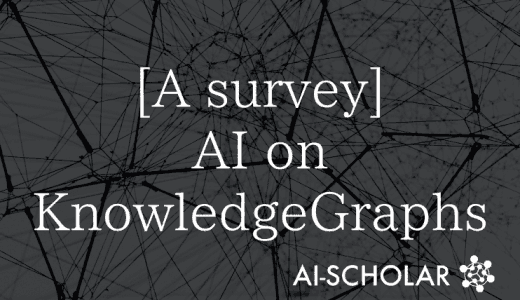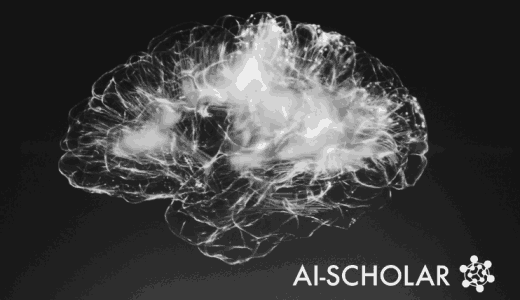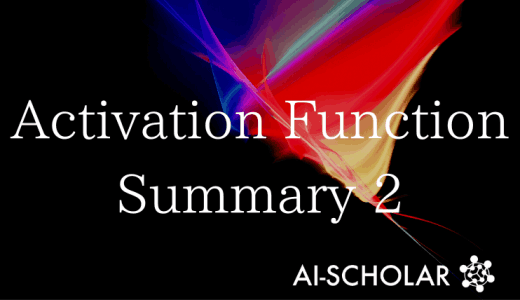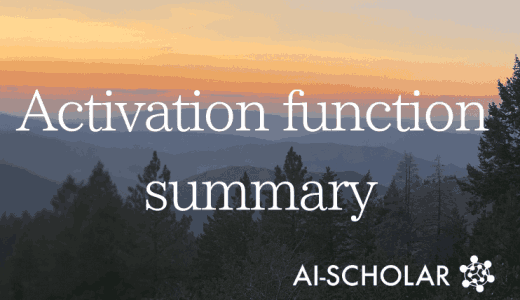A Survey Of Traffic Prediction Modeling Methods Using Deep Learning
3 main points.
✔️ A survey of research using deep learning models in traffic engineering
✔️ A description from the first study applying deep learning models
✔️ A cornerstone paper for future development
Learning methods in the transportation domain: a review
written by Hoang Nguyen, Le-Minh Kieu, Tao Wen, Chen Cai
(Submitted on 30 July 2018)
Comments: accepted to Selected Papers from the 25th ITS World Congress Copenhagen 2018.
Subjects: machine learning (cs.LG)
Traffic Engineering and Deep Learning
There is a link between traffic engineering and deep learning, namely networks, and deep learning-based representations and extensions to traditional forecasting methods are gaining attention. Traditional methods for reducing traffic congestion and predicting traffic demand are difficult to transfer and model due to the complexity of the road network and the Spatio-temporal dependencies within the network. In addition, traffic patterns are time-dependent with each road segment separate from the next. In addition, traffic data is obtained from multiple data sources and sensors, and given the variation in data over time, network convergence, and data accuracy, it is important to provide meaningful features to the learning prediction model. With these considerations in mind, this research highlights shortcomings in prediction using traditional machine learning methods (e.g., support vector machines, logistic regression, decision trees) and presents work that addresses these shortcomings using deep learning models.
Task-specific examples
In the following, we present research for each of the various tasks in traffic engineering.
Representation of transportation networks
This paper describes a road segment (link) as a road situation in a transportation network.
A two-dimensional array representation of traffic congestion is shown below. Let $N$ be a link and $T$ be a time interval.
\begin{equation} \left[\begin{array}{ccccc}C_{1}^{1} & C_{1}^{2} & C_{1}^{3} & \ldots & C_{1}^{T} \\C_{2}^{1} & C_{2}^{2} & C_{2}^{3} & \ldots & C_{2}^{T} \\\vdots & \vdots & \vdots & \ddots & \vdots \\C_{N}^{1} & C_{N}^{2} & C_{N}^{3} & \ldots & C_{N}^{T}\end{array}\right]======\Rightarrow\left[\begin{array}{c}C_{1}^{T+1} \\C_{2}^{T+1} \\\vdots \\ C_{N}^{T+1}\end{array}\right] \end{equation}
$C^t_n$ represents the traffic congestion status at time $T$, the $n$th link, which can be a binary value of congested or not congested, or a traffic condition (e.g., smooth, lightly congested, etc.). The model predicts the traffic conditions on all links in $T+1$ based on the information in interval $T$. If each link is independent, the problem can be reduced to a series learning problem, but when multiple links are considered, deep learning for time series is required.

The author modeled the traffic network using Recurrent Neural Networks (RNN) for training in time series and deep Restricted Boltzman Machines (RBM) for learning the representation in each layer (Fig. 4). Despite its simple structure, the model did not perform well in terms of prediction accuracy because it needed to learn and infer spatial relationships (e.g., relationships between road segments) using only historical data.
In order to solve this problem, Fouladgar et al. proposed a traffic flow model based on Convolutional Neural Network (CNN) that can infer inflow and outflow information as well as traffic conditions of road segments. The spatial correlation between road segments in the traffic network is learned by using the characteristics of CNN.
In this model, if each point in the traffic network is $S$, the adjacent points leading to $S$ are $L_1, L_2, \ldots, L_n$, and the adjacent points leading to the points in the traffic flow of $S$ are $R_1, R_2, \ldots, R_n$, then the state at the instant of time $t$ is represented by
\begin{equation}\left[ L_n \rightarrow L_{n-1} \rightarrow \ldots L_2 \rightarrow L_1 \rightarrow S \rightarrow R_m \rightarrow R_{m-1} \rightarrow \ldots R_2 \rightarrow R_1 \rightarrow S \right] \end{equation}

The traffic condition information is input as Traffic Condition as shown in the figure, and the traffic flow at $t+1$ is predicted by adding the Incidents information for each event to the final all-connected network. We also introduce Long-Short Term Memory (LSTM) to model traffic conditions, which successfully captures the characteristics of long-term time series compared to RNNs. However, there are still some problems that cannot be handled individually for modeling specific accidents or limited regions without the right configuration and parameter selection.
Traffic Flow Forecasting
Predicting traffic flow is a fundamental problem in traffic modeling and data analysis. Specifically, the task is to predict the number of vehicles on a future road segment. Traditional methods have not been able to achieve accurate results due to manual feature selection, separate training, and a small number of layers. In response, Huang et al. proposed a model in deep learning that consists of a layer with multiple outputs and Deep Belief Networks (DBN) for traffic flow prediction.
The input space is $X$, which contains all observation points in the time interval before a certain time, and features are extracted by unsupervised learning with DBN. Then, traffic flow is predicted by grouping related roads and learning them. Although several grouping methods have been proposed (e.g., spatial clustering, traffic flow change clustering), Huang et al. propose weighted clustering, which clusters related roads based on the weights of the roads inferred in the regression layer. They succeeded in extracting useful features from the data using DBN. In our experiments, we predicted the traffic flow in a short period of time and in 60 minutes. One of the good points of this research is that it is compared with traditional methods such as ARIMA model, Bayesian model, Support Vector Regression (SVR), Neural Network model and nonparametric regression model. As a result of the comparison, the conventional method performed better when tested on the PeMS dataset and the proposed method outperformed it only at the low-to-medium level of testing, which still leaves room for improvement.
In a more recent study, Polson and Sokolov et al. proposed a short-term traffic flow prediction model using L1 constraints and tanh layers. It has a simple structure, but it has been evaluated on the prediction results for special event data where the traffic flow changes rapidly. Zhao et al. also proposed a similar Spatio-temporal model using LSTM for short-term traffic prediction. Zhao et al. compared the performance of LSTM with other deep learning models, such as RNNs and Stacked Auto-Encoders (SAEs), and found that LSTM performed better. The performance of LSTM outperformed that of RNN in the long term and also outperformed the performance of the traditional parameterized approach using big data of traffic.
signal control

Traffic congestion is very important and needs to be solved the problem on roads. The solution is to expand the infrastructure, but this is expensive and time-consuming, so we introduce a method to optimize traffic flow using Traffic Signal Controls (TSCs) to reduce congestion and pollution. In order to solve this problem, we propose a method to optimize traffic flow using GTSCs. To solve this problem, Genders and Razavi proposed an adaptive traffic signal control agent using a deep learning model and trained it to learn the optimal control policy. To learn, they proposed a new discrete traffic state encoding based on information density. This encoded traffic state is treated as input to the deep learning model and used to learn using Q-learning with experience replay. The use of deep learning allows us to vary the process in reinforcement learning by observing behavior without the need to design the state and action spaces as originally required. This has resulted in an 82% reduction in overall latency, 66% reduction in queue length, and 20% reduction in traffic time.

Van Der Pol similarly dealt with deep learning and Q-learning, encoded traffic conditions at all intersections in a binary matrix, and experimented with multiple agents reinforcement learning in conjunction with a single agent. The results overwhelmed the baseline model and showed that it can be applied to multiple agents.
Next, Li et al. trained traffic light timings by Q-learning and approximated the Q function with sparse auto-encoders neural network (SAE) instead of using deep learning; SAE neural network takes the state matrix as input and outputs the Q values with possible actions to take. This shows that the performance by deep reinforcement learning is outperformed in traffic light design.
Automation of Vehicle Detection
Traditionally, traffic data has been collected by timing loop detectors and piezoelectric sensors, but it has been difficult to collect a constant and reliable number of data. With the rise of deep learning algorithms, UAV-based imaging systems and camera-based vehicle identification systems have become commercially viable. The deep learning models that we often hear about identifying cars by their model types, but due to the lack of training data sets, there has been a lot of transfer learning of trained models, and the models needed to be clarified. Traditional support vector machines (SVMs) have been successfully used to identify multiple classes of cars using geographical and appearance-based approaches (Moussa 2014. ) Wang et al. proposed a 2D deep belief network for car detection. They used 2D planes instead of 1D vectors as input and performed bilinear projection on discriminable information. They achieved a discrimination accuracy of 96.05% on the data.
However, even with the use of SoTA car detection and identification algorithms, it is difficult to detect cars in special situations such as bad weather. In addition, video cameras can be used to monitor traffic volume, traffic density, vehicle types, and congestion in real-time. Furthermore, by detecting the speed of vehicles, the system can be adapted to the region, and as this research progresses, it is expected that more valuable data will be obtained for traffic agents.
traffic demand forecast
Traffic demand forecasting predicts how many users will be present on roads and public transport in the future. Traffic demand forecasting allows the use of passenger demand as an input in various traffic models. Most traffic demand forecasting research is divided into four steps (trip generation, trip distribution, modal choice, and trip assignment) within the demand model in long-term demand forecasting.
On the other hand, short-term traffic demand forecasting is an emerging topic, which aims to predict traffic demand in the near future using historical data. The research has been accelerated especially by the recent drastic increase in data acquisition methods such as smart cards, sensors, probes, GPS, and CCTV. These acquisition methods are voluminous and informative, but at the same time, they are complex in terms of analysis structure. Therefore, we are using deep learning to make predictions in the short term more accurately and in real-time (or in a very short period of time).
Cheng et al. proposed several deep learning models to predict the daily traffic demand shifts in a large traffic network. The models consider both temporal and spatial correlation, and three models are implemented and evaluated: DNN, stacked LSTM, and feature-specific data fusion model. The results show that the stacked LSTM network has the best performance. Next, Ke et al. proposed an approach that considers extrinsic relationships in addition to space and time to further improve the system (Ke et al. 2017. ).
Zhu et al. created a demand forecasting model for car-sharing, using an SAE model to learn potential Spatio-temporal correlates of demand; Yao et al. extended this model and proposed a model to forecast taxi demand. This model consists of time series, spatial, and semantic perspectives. Elsewhere, Liu et al. proposed a model for predicting passenger demand in public transportation and used DNN to predict the demand for the rapid transit system in Taipei. The input includes the past passenger flow, temporal information, and holiday factors.
accident forecast
An important goal in traffic engineering, as well as predicting traffic demand and reducing congestion, is traffic safety. Traffic accidents not only cause damage to people and buildings but also cause significant delays in the road network from which they originate. Therefore, the prediction of traffic accidents is very important to build a system to control the traffic situation.

Chen et al. used a deep stack denoise autoencoder to model hierarchical features for car representations. The model is trained using accident data, and the car data is input in real-time to generate a risk map of traffic accidents. As a result of our experiments, we were able to accurately predict the risk of traffic accidents, but it will take more time to form a reliable model due to the lack of accident data. In addition, it is thought that the model can be improved by using not only accident data but also location data and origin-destination data.
For individual car accident prediction, Chen et al. use deep genetic algorithms (GA) to propose an optimal neural network to predict rear-end collisions and apply it to an automatic collision avoidance system. The model considers the probability of collision risk under the assumption that inter-vehicle communication, road-to-vehicle communication, and GPS data are used, and by using GA, the optimal solution is used efficiently.
automatic operation (machine)
One of the easily conceivable proposals for deep learning methods for automated driving is the experimental evaluation of Huval et al. 's deep learning method for driving on highways. Their work shows that CNN models can detect lanes and cars with considerable accuracy, but that computational speed is required to perform real-time detection.
In addition, while most studies assume driving on highways and well-maintained roads, Hadsell et al. proposed a DBN in the long term for off-road automated driving. With the proposed model, features are extracted from the input images and a real-time discriminator is trained to predict the driving potential. In experiments, the model successfully identifies trees and roads, but the performance seems to depend on the size of the training data, and more informative images are required.
Driver's behavior
Research is being conducted on the use of sensors and GPS data in cars to detect drivers' attitudes when driving. This aims to prevent drivers from falling asleep in advance, develop automated driving, and bring information to provide to relevant insurance companies. One study of driver behavior analysis using GPS is by Dong et al. They implemented CNNs and RNNs with 1D convolution and compared their performance. This successfully extracted complex driving patterns and improved the accuracy of driver detection compared to conventional methods. In addition, in our study of doze detection using face recognition technology, we have successfully extracted latent features and complex nonlinear features of faces with an accuracy of over 92%.
summary
In this section, we have introduced the use of deep learning in various traffic tasks. In relation to the main goals of traffic engineering, which are efficiency and safety, deep learning has been successfully used to improve prediction accuracy for complex data. Future work will focus on solving problems in real-time, acquiring data sets, and proposing methods for various situations. As the development of automated driving progresses, it is expected that data acquisition methods, driver behavior, and user behavior will also change. Research using deep learning is expected to continue in this rapidly changing field.
Categories related to this article







